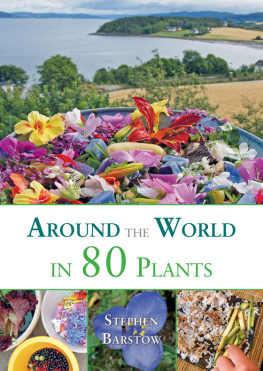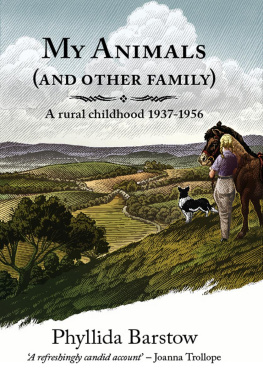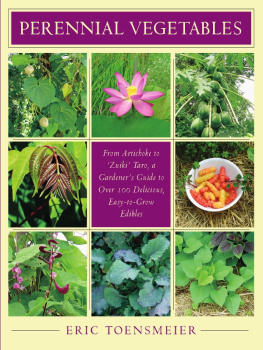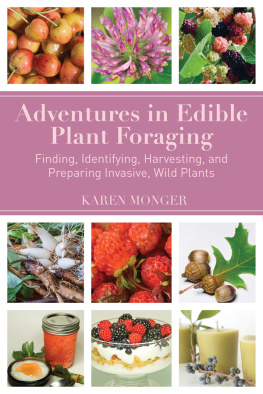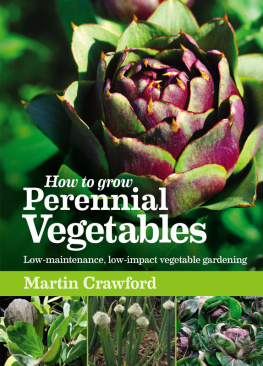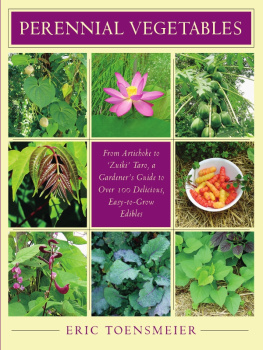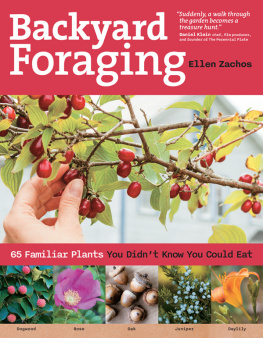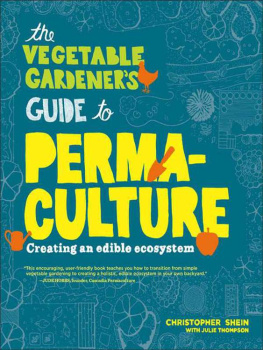AROUND THE WORLD IN 80 PLANTS
An Edible Perennial
Vegetable Adventure
in Temperate Climates
STEPHEN BARSTOW
Permanent Publications
Published by
Permanent Publications
Hyden House Ltd
The Sustainability Centre
East Meon
Hampshire GU32 1HR
United Kingdom
Tel: 0844 846 846 4824 (local rate UK only)
or +44 (0)1730 823 311
Fax: 01730 823 322
Email:
Web: www.permanentpublications.co.uk
Distributed in the USA by
Chelsea Green Publishing Company, PO Box 428, White River Junction, VT 05001
www.chelseagreen.com
2014 Stephen Barstow
The right of Stephen Barstow to be identified as the author of this work has been asserted by him in accordance with the Copyrights, Designs and Patents Act 1998
Stephen Barstows website: www.edimentals.com
Photographs Stephen Barstow, unless stated otherwise
Designed by Two Plus George Limited, wwwTwoPlusGeorge.co.uk
Index by Amit Prasad,
eBook conversion - eBookPartnership: www.ebookpartnership.com
British Library Cataloguing-in-Publication Data
A catalogue record for this book is available from the British Library
PRINT ISBN 9781856231411
PDF ISBN 9781856231428
EPUB ISBN 9781856231435
MOBI ISBN 9781856231442
All rights reserved. No part of this publication may be reproduced, stored in a retrieval system, rebound or transmitted in any form or by any means, electronic, mechanical, photocopying, recording or otherwise, without the prior permission of Hyden House Limited.
CONTENTS
ABOUT THE AUTHOR
STEPHEN BARSTOW grew up in the south of England, and spent seven years in the Universities of Exeter, East Anglia in Norwich and Heriot-Watt in Edinburgh, where he was awarded a PhD in 1981 specialising in ocean waves. While a student in Edinburgh, he became interested in organic vegetable growing. A big early inspiration was founder and organic pioneer Lawrence Hills whom he met at HDRA (Henry Doubleday Research Association) in the early 1980s. In 1981, Stephen moved to Trondheim in Norway to work. Both he and his wife were vegetarians, which was virtually unheard of in Norway at that time, and there were only a handful of vegetables available in supermarkets. Growing their own vegetables was therefore a necessity and most of the vegetables Stephen grew in Scotland turned out also to be possible in their new home. He also quickly discovered the Norwegian Useful Plants Society (the over 100-year-old Nyttevekstforeningen, see box, ).
Another inspiration in the mid-1980s was Roger Phillips book Wild Food. Contacting Phillips, Stephen was loaned a set of slides from the book which he used in talks on wild edibles in Norway. At the end of the 1980s, he began to collect some of the local wild edibles and planted them in a bed in his garden. About the same time, he obtained a copy of Sturtevants Edible Plants of the World through the Abundant Seed Foundation in the USA. It has notes on some 3,000 different edible species worldwide (N.B. Some are no longer recommended as edible, so dont use this work blindly!). To his surprise, many of the species were perennial plants commonly cultivated in Norwegian gardens.
With assistance from various seed exchange clubs, Stephens collection of edible plants grew rapidly. Inspired first by Sturtevant and later by Ken Fern and Plants For A Future, Stephen has sown several hundred new species every year in addition to traditional vegetables and the collection peaked at some 3,000 varieties.
Stephens garden is located on a rocky hillside near the village of Malvik, 15km east of the Norwegian city, Trondheim, and with a beautiful view over Norways largest fjord, the Trondheimsfjord. Dubbed The Edible Garden when it was presented in a Norwegian television gardening series in 2003, this abundance made it relatively easy for Stephen to set the world record for the greatest number of plant varieties in a salad. This world record attempt took place on 19th August 2001. The final salad had a grand total of 363 distinct plant varieties. However, this was well and truly beaten at the follow-up event on 24th August 2003 when a salad with 537 varieties was put together (see photo opposite).
Stephen has written a number of articles both in the journal of the Norwegian Useful Plants Society, the largest Norwegian gardening magazine, Hagetidend, and Permaculture magazine. Since 2006, he has been national coordinator of the Norwegian Seed Savers (protecting heritage Norwegian vegetables, including some perennials) and won the 2012 Norwegian Plant Heritage Award.
Over the last few years, Stephen has had a part-time job working for the Norwegian Genetic Resource Centre on collecting old perennial vegetables and herbs from all over Norway, including various Alliums, asparagus, Good King Henry and others.
A Note on the Climate
Stephens garden is close to 64N, in an area of extreme climatic variability. The grass can be green on 1st January and snow might lie for a short while on 1st June. Locals talk about having two seasons the green and the white winter. However, it is surprisingly mild for the latitude, not far from the Arctic Circle, due to the effect of the North Atlantic drift (continuation of the Gulf Stream). The fjord never freezes in winter and this helps provide a local climate where minimum winter temperatures are seldom much below -20C. In fact, even though there is much snow in the hills around, there are long snow-free periods in the garden. This is not necessarily a good thing as a stable snow cover acts as a good insulator for less hardy perennials. The mean monthly temperature ranges from about -3C in January to 15C in July, so the summers are cool.
CONTACT THE AUTHOR
I would very much appreciate your feedback, comments, seed, plants etc., so please dont hesitate to contact me at:
Email:
Facebook: Stephen Barstow, www.facebook.com/stephen.barstow.7
Facebook groups: Edimentals, Plant Breeding for Permaculture, Friends of Hablitzia tamnoides and Friends of Ground Elder
Website/blog: www.edimentals.com
DEDICATION
To my friend Sbastien Verdire and your amazing edible garden at
Chteau de Valmer: so sad you never made it to Norway,
nor held this book in your hands, bon voyage my friend.
To my dear Mum and Dad
To Alva Barstow, so glad you liked the ALlium VAlidum I gave you,
you are my little hope for the future
DISCLAIMER
We have not included detailed identifications of the type you would find in a field guide as this is mainly a book to inspire perennial vegetable gardening rather than foraging. In any case, many of the plants are found over a wide geographical area and confusion species would vary between region, so this would have been an impossible task to get right. Many of the plants are what I like to call Edimentals (edible ornamentals). If you are purchasing plants, it is preferable to source these from nurseries specialising in edibles as there will be more focus on getting the identification right than for an ornamental nursery. Nevertheless, we take no responsibility for readers misidentifying plants. It is also always advisable to try just a small amount of new plants the first time, as you may be allergic to the plant in question.
ACKNOWLEDGEMENTS
When I look back over the years, there are many people who have helped me along the way. Wandering around my edible garden, many of the plants remind me of people in one way or another. It may have been best not to try to name people here as I am bound to have forgotten people, so very sorry if youre in that category. There follows a short list

